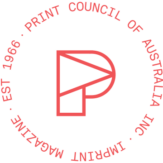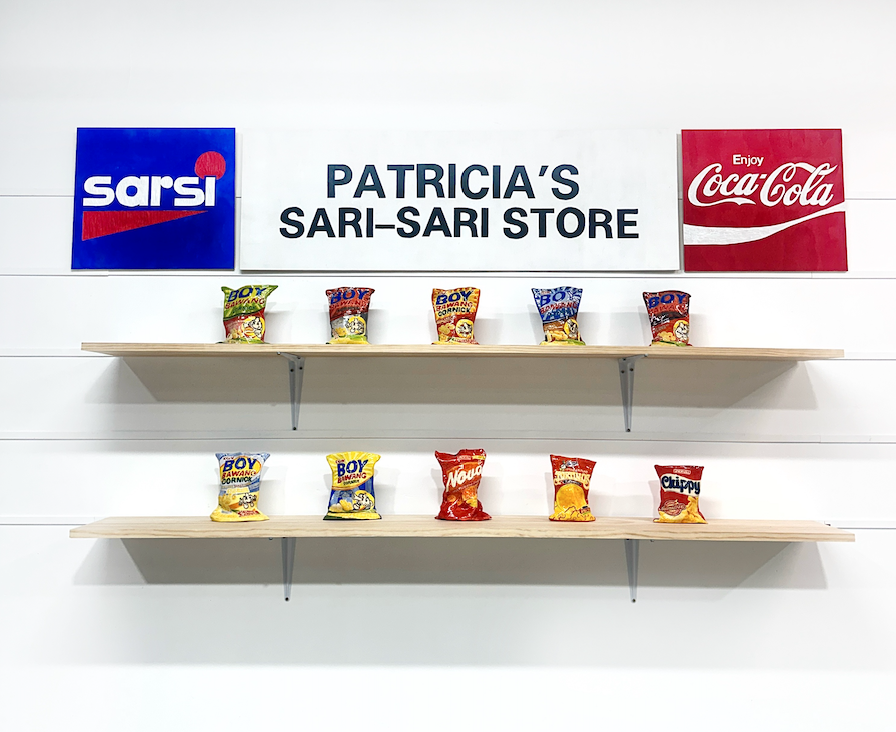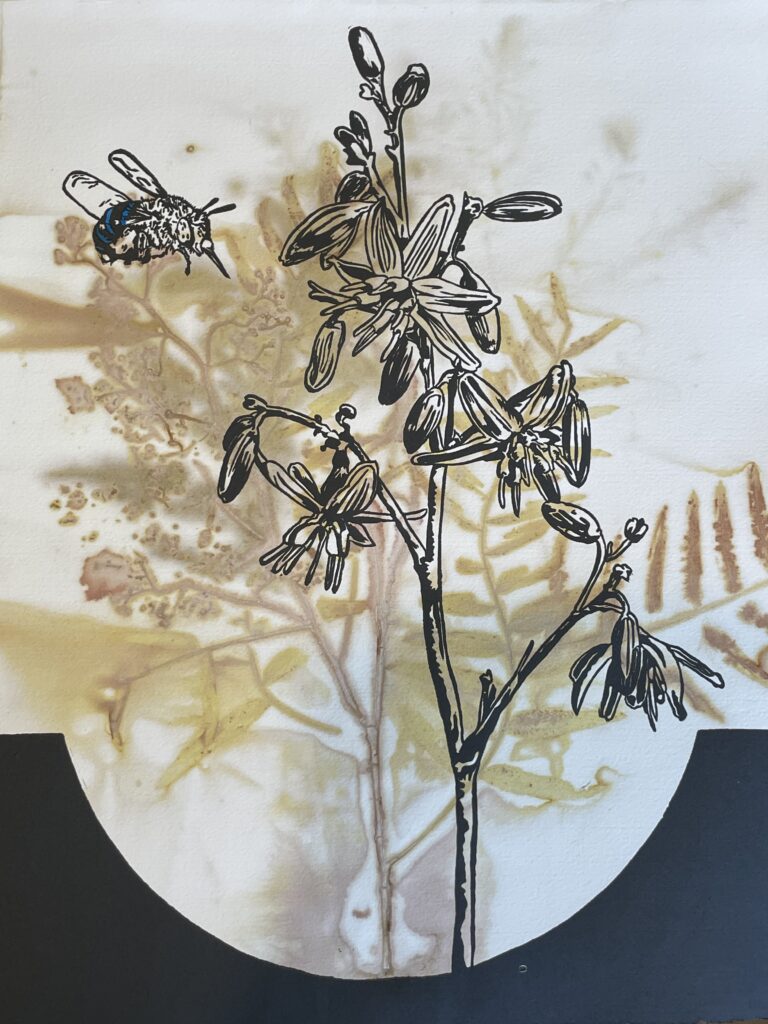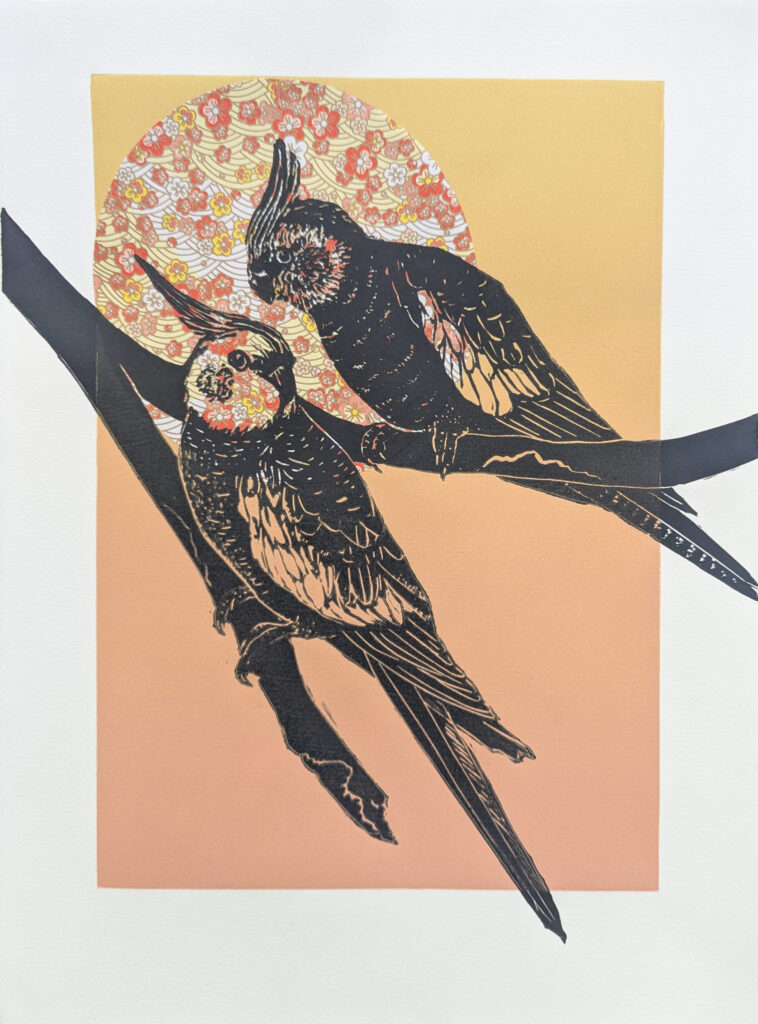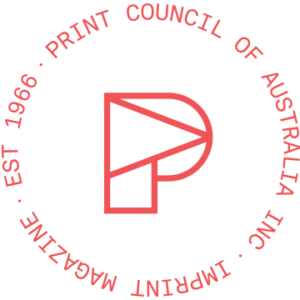Top:
Patricia Agus, Patricia’s Sari-Sari Store, acrylic on woodcut block, lino embossed ceramics, shelf, brackets, size variable, 2025
Below:
James Farrar, Feast of Illusions, linoprint, 79.5 x 112.5 cm, 2025
Patricia Agus, People that have walked by PCA but didn’t come in, oil paint on woodcut block, size variable, 2025
James Farrar, First Movement, 50.5 x 65.5 cm, linoprint, 2025
Patricia Agus, Jeepney Car #2 Manila (detail), linocut, hand-coloured with gouache, 31.2x27cm
James Farrar, Second Movement, 50.5 x 65.5 cm, lino print, 2025
Patricia Agus, Chippy, lino embossed on LGH Clay, 13.5 x 3.6 x 14 cm, 2024 (fired by Frida Birkic)
James Farrar, Veil of Embrace, lino print, 86.5 x 126.5 cm, 2025
Patricia Agus, Nostalgic Flavours (Boy Bawang Garlic) State 2, lino print, 30.5 x 21.5 cm, US, 2025
All images copyright and courtesy of the artist.
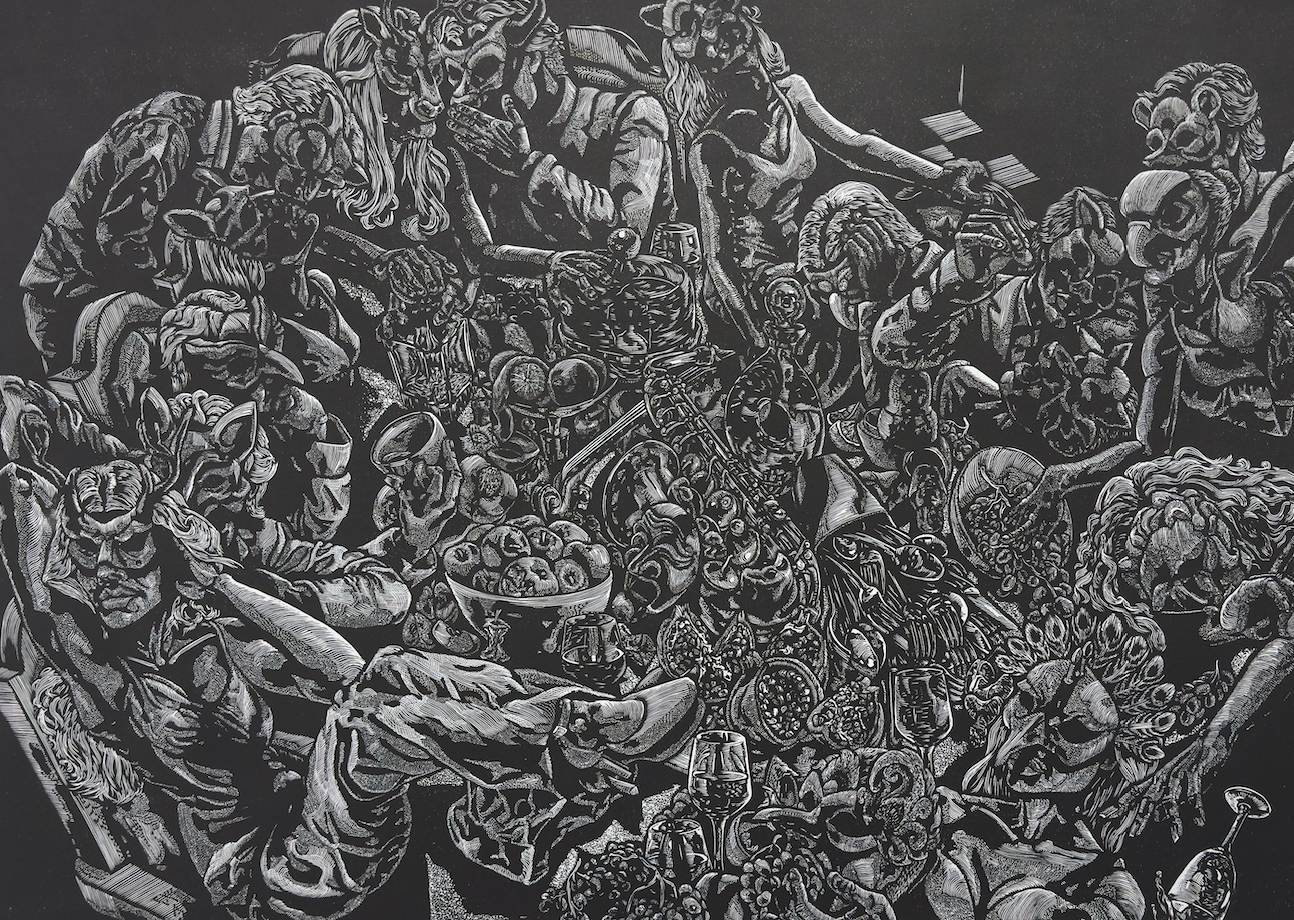
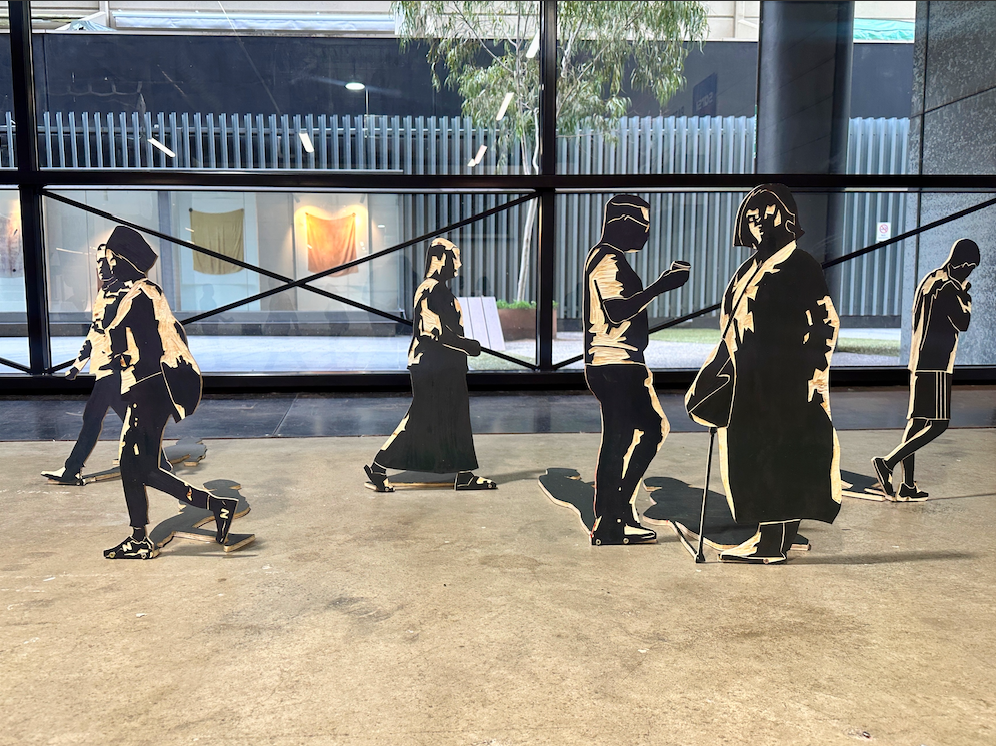
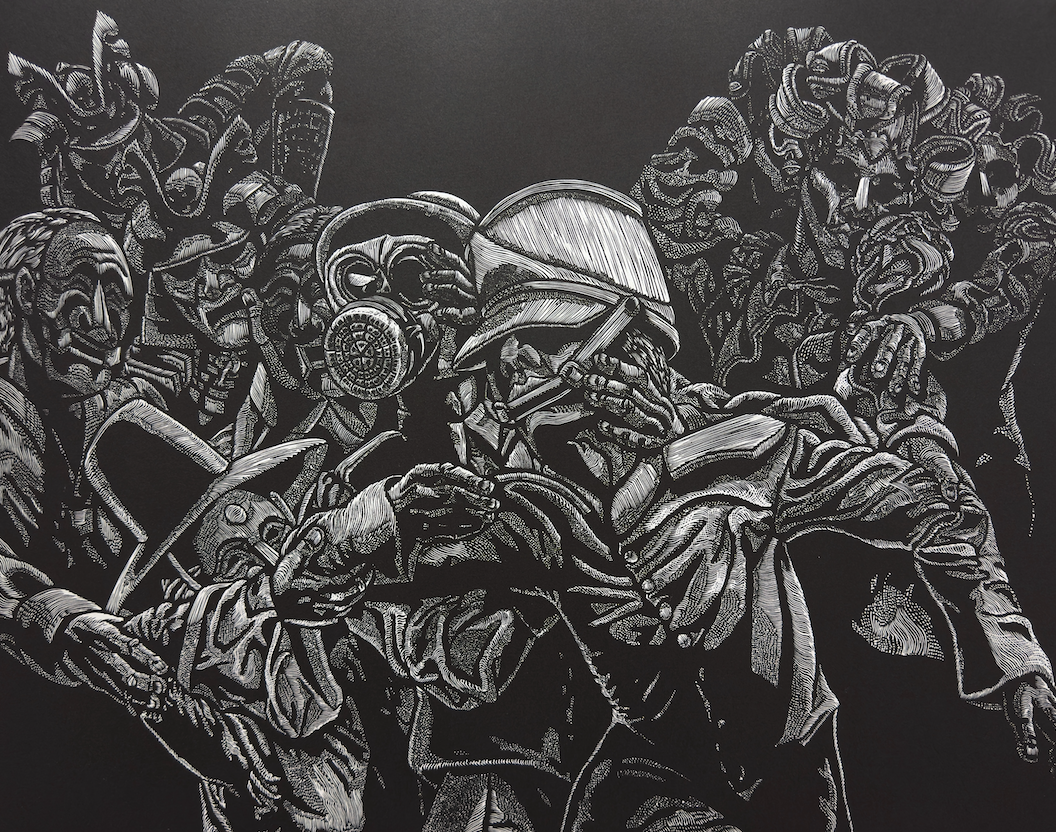
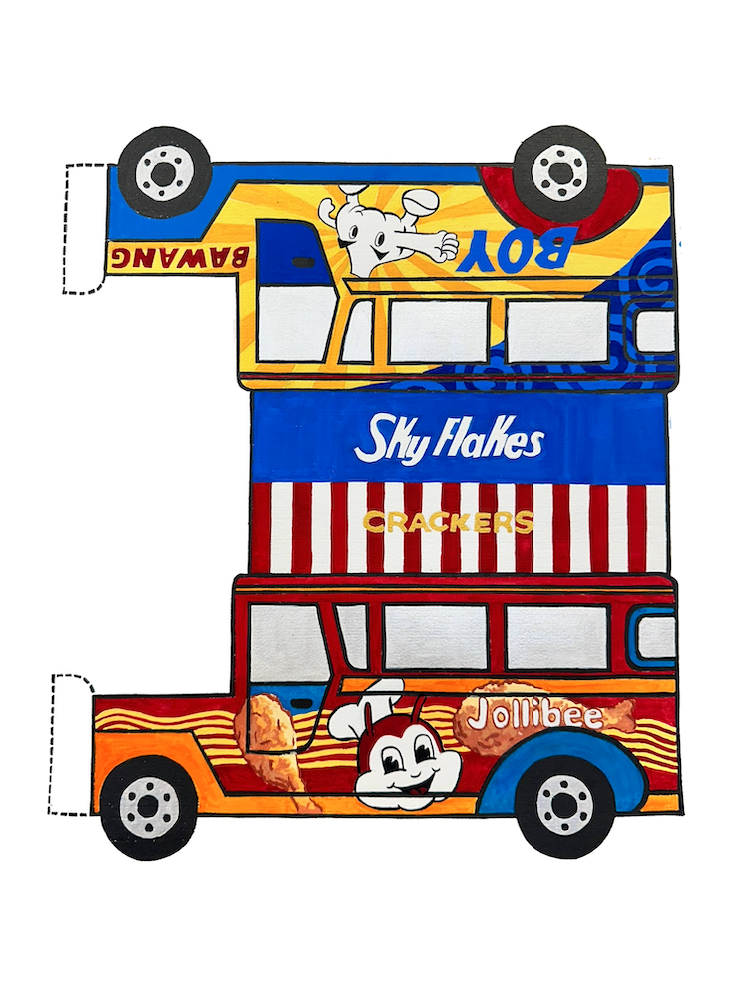
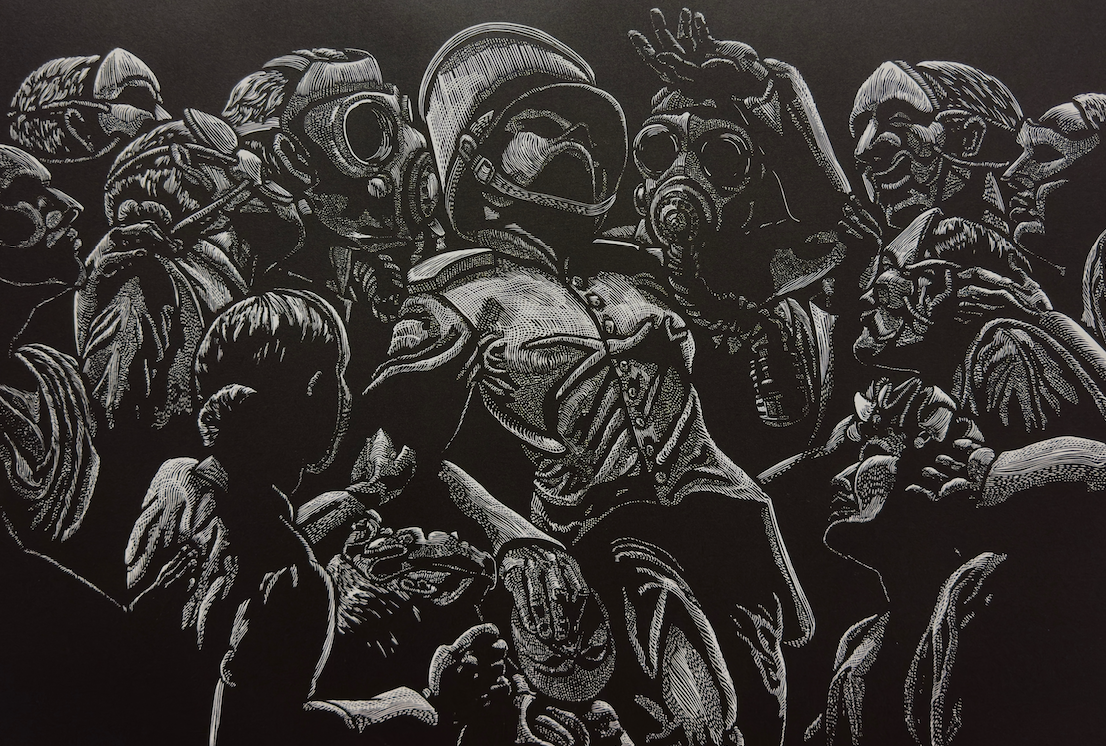
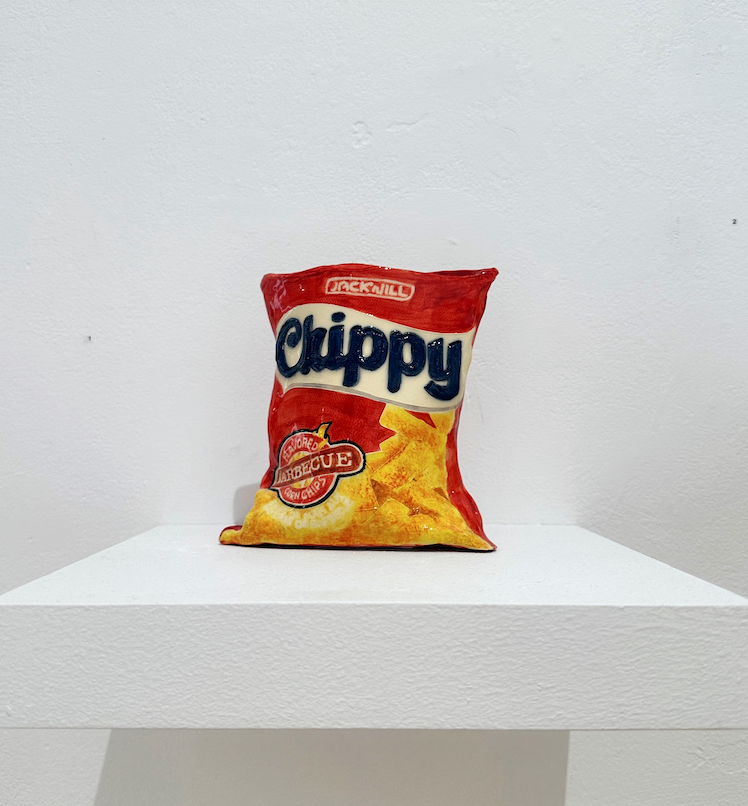

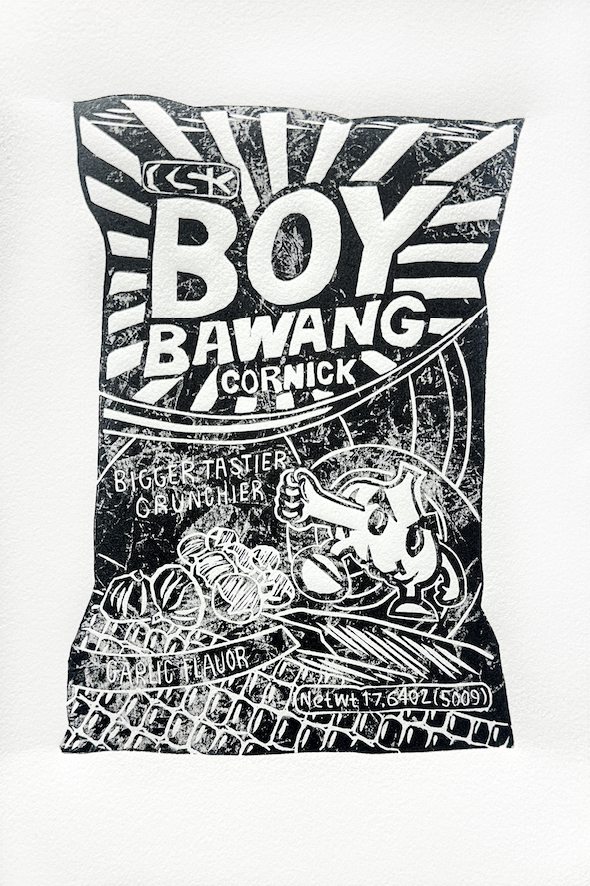
Q: What were some of the foundation ideas for this exhibition project?
A: [PA] My practice has always stemmed from my roots. I was born in the Philippines, but my family moved to Australia when I was four years old. Much of my work explores the Filipino diaspora experience and my attempt to stay connected to those roots. Over time I have lost aspects of my Filipino identity, especially the culture and language. One way I have held onto my culture is through food. After moving out of my family home, I often felt homesick for Filipino flavours and my dad’s cooking. Although I have experienced the stereotypical moments of feeling embarrassed about my home-cooked meals and wishing for Aussie tuck shop lunches and sandwiches, food has remained one of my strongest cultural ties.
A:[JF] My works are a product of my personal journey as an adopted Korean male living in Australia. I aim to represent my experience in finding an Australian-Korean identity. Primarily working through lino prints, I aim to trace the tension between concealment and authenticity. I combine imagery of dance, movement and music to convey the constant noise of my thoughts, trying to find my identity. This idea of inner conflict is furthered through the medium of printmaking, where the gestural line work embodies this chaotic tension.
Q: How did the artwork selection take place?
A: [PA] I wanted to experiment with different print techniques and more experimental presentation methods for this exhibition. The selected works are based on three main combinations I’ve explored in the last few years: print x ceramics, print x painting and print x sculpture/installation. In 2024, I began learning pottery at the Box Hill Community Arts Centre. What started as a casual hobby quickly evolved into a new element of my practice, leading to the creation of lino-embossed ceramics. I wanted to create works that not only reflect my cultural background but also engage with current media discourse.
A: [JF] The selection of works was guided by a desire to expand and deepen my existing practice. I aimed to create new pieces that build upon my foundation in printmaking, using gestural linework and the bold, direct language of printmaking to evoke emotion and provoke reflection. Central to the selection was a need to explore and express my complex relationship to cultural identity, particularly my tangible yet distant connection to Korea. I chose to present a dialogue between tradition and experimentation, with conventional printmaking on paper to more exploratory forms, including hand-coloured wood carvings and layered silk prints. Each work was selected to reflect different facets of my diasporic narrative.
Q: How does the exhibition manifest – what do visitors experience?
A: [PA] The exhibition space reflects an internal negotiation of identity, where personal memory and diasporic experience converge. It’s both a confrontation and a celebration of cultural duality, encouraging viewers to reflect on their own relationship to heritage, displacement, and belonging. I heavily focused on my relationship with the Philippines for this exhibition, to educate the audience about my culture, but to rediscover and heal the guilt I felt for losing my connection to this beautiful country and its culture. I want audiences to feel like they are visiting the Philippines when viewing my work.
I want to challenge traditional notions of how print can be presented and experienced by pushing the boundaries of the medium. These hybrid forms are pushed until the print element is almost imperceptible. This allows the audience to question the materiality of print and redefine its role beyond the two-dimensional surface, encouraging viewers to engage with it in unexpected and tactile ways.
A:[JF] The exhibition space becomes a reflection of the internal struggle of cultural identity, shaped through an interplay of presence and memory. Apparitional layers of silk hold quiet contradictions, embodying the tension of my connection to Korea—at once intimate and estranged. The hand-coloured wood carving acts as a homage to Korean art, while traditional two-dimensional lino prints anchor the work in heritage, subtly challenging the idea of identity as fixed or permanent. Printmaking emerges as a language of rupture and repair, offering a space for viewers to engage with the layered, shifting realities of the diasporic experience.
Q: What are some of the key works and what subject matter do they deal with?
A: [PA] My practice fuses printmaking with other mediums. Sculpture is my favourite medium to combine with print because of its spatial and immersive qualities, as I like to challenge how print is defined. My main installation for this exhibition is Patricia’s Sari-Sari Store. Sari-sari translates to ‘variety’ or ‘sundry’ and is often a family-run convenience store selling a range of snacks, candy or groceries. I’ve created my own store in this exhibition to display my print ceramics. My Jeepney series faces the conversation of its future due to the government’s push for modernisation. I exclusively work in black and white, so this series took me out of my comfort zone since Jeepney art is characterised by its use of bright colours and eye-catching designs. I feel for the artists and drivers who will be faced with financial difficulties and loss of tradition due to the push for newer vehicles. All seven of my Jeepney cars represent elements of home, tracing a journey from Laguna to Prahran.
A: [JF] First Movement explores the fragmented psyche of a diasporic self, delving into one’s inner dissonance grappling with the discordant duality of cultural identity, personal history, and inherited trauma. At the compositional heart of the piece stands a Drum Major, the leader of a marching band represented as both conductor and captive of the chaotic theatre that surrounds him. The suffocating reality of ancestral echoes coalesce into an inner cacophony of diasporic distortions, represented by the encircling masked figures. This is the first part of an emotional symphony of displacement, memory, and reinvention. A meditation on cultural negotiation and the quiet violence of a haunted identity. Perhaps those who share these liminal experiences can truly hear the marching band.
Ethereal Resonance reflects upon aspects of my identity struggles as an adopted Korean person living in Australia. The work addresses an imagined haunting that is experienced by the ghost of my Korean identity. While tangible, it is also at once completely alien. The ghost represents the dichotomies of an identity as a person of colour growing up in a Western country. The ghost is depicted through the layering of chiffon silk on a layer of heavy satin silk. The function of memory and experience provides context to understand the ghost that diasporic people live with, hoping to make ideas and concepts clear to those who may not have endured such events.
Q: What is it about the printmaking experience that you most appreciate?
A: [PA] Growing up, I always knew I loved art and wanted to pursue it professionally, but I never felt strongly connected to a specific medium. I was fortunate to explore many during school, but it wasn’t until I studied at VCA in the Drawing and Printmaking department that I deeply fell in love with print. I enjoy the meticulous and time-consuming process of printmaking and the many techniques there are to learn. It was American contemporary artist, Swoon, who inspired me to explore sculpture within my practice. Her work opened new possibilities for presenting printmaking which encouraged me to move beyond traditional approaches. I appreciate receiving the 2021 Firestation graduate prize as this allowed me to continue printmaking beyond my studies and connected me with a loving and welcoming community.
A:[JF] The carving is the part of the printmaking experience I appreciate the most. The arduous process while long is almost therapeutic, where I am able to literally carve out a narrative, giving form to thoughts unable to be communicated through words. Printmaking becomes my language of rupture and repair, every mark, each impression, challenges the singular self, offering instead a shifting mirror, where identity is not defined, but continually becoming. I also enjoy the collaborative side of printmaking. I met Trish in the printmaking rooms at VCA and ever since there has been a bond created through printmaking culminating in this exhibition. There is a beautiful community of printmakers and to be a part of this gives me a real sense of belonging.
—
Banana Split, by Patricia Agus and James Farrar, is at the Print Council of Australia Gallery, Studio 2 Guild, 152 Sturt St, Southbank, until 25 July. Opening event: 5-7pm, 10 July. www.printcouncil.org.au
—
Join the PCA and become a member. You’ll get the fine-art quarterly print magazine Imprint, free promotion of your exhibitions, discounts on art materials and a range of other exclusive benefits.
